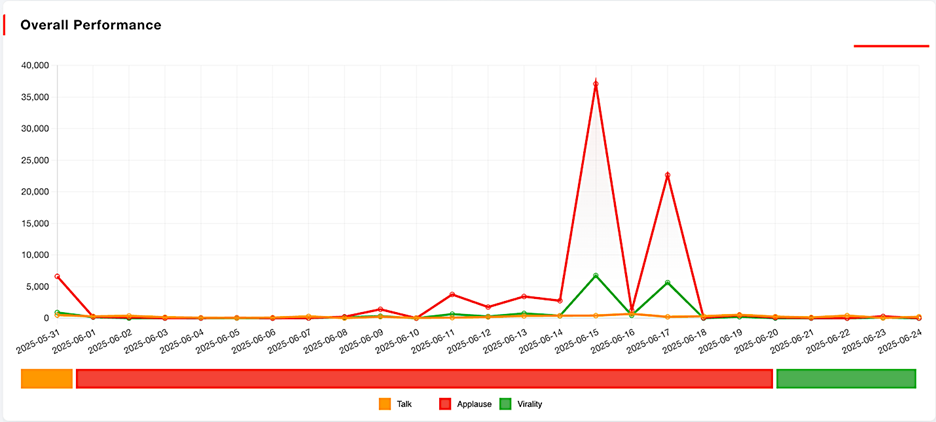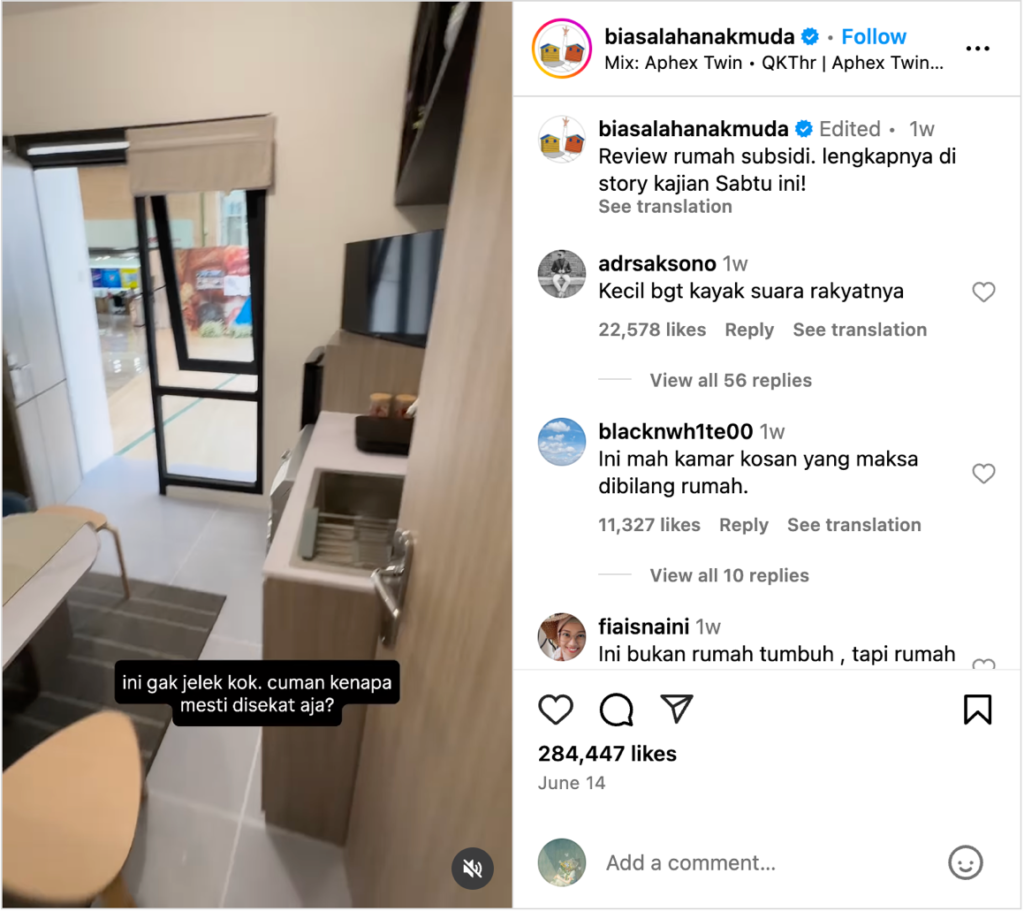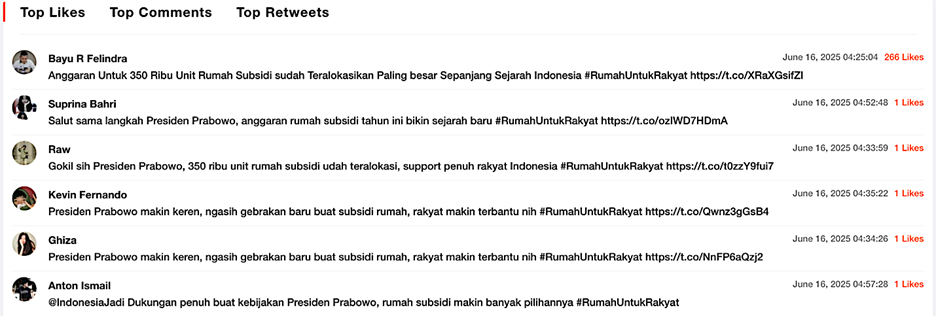The Steep Road of Purbaya in Blocking Illegal Used-Clothing Imports
Finance Minister Purbaya Yudhi Sadewa underscored the government’s uncompromising stance against illegal used-clothing imports, which he stated have harmed the…

The Lippo Group has unveiled a new concept for subsidized housing in Indonesia, showcasing two mock-up units at the lobby of Nobu Bank, Plaza Semanggi. The initiative comes as a response to the government’s proposal to reduce the minimum size requirements for subsidized homes, a move that has sparked widespread debate.
The two prototypes consist of a one-bedroom unit with a land area of 25 square meters and a building area of just 14 square meters, and a two-bedroom version at 26.3 square meters of land and 23.4 square meters of building space. Despite their modest size, the houses feature reinforced concrete structures, ceramic flooring throughout, water-resistant gypsum ceilings, and complete sanitary fittings, including sit-down toilets, sinks, and showers.
The showcase coincides with the Ministry of Housing and Settlements’ plan to finalize new regulations on subsidized housing. The draft regulation, currently open to public consultation, proposes a dramatic reduction in minimum size requirements—from 60 to 25 square meters for land, and from 21 to 18 square meters for building space—while keeping the maximum limits unchanged.
Sri Haryati, Director General of Urban Housing, confirmed that the revised policy is intended to accommodate urban land scarcity and promote access to affordable housing. Minister Maruarar Sirait echoed these sentiments, emphasizing the government’s goal to widen the reach of housing programs without sacrificing consumer choice.
However, the proposal has received mixed responses from housing associations.
Joko Suranto, Chairman of Real Estate Indonesia (REI), acknowledged the market challenges of land prices and accessibility, but warned against sacrificing liveability. “Space matters,” he said, “especially for family well-being.”
Junaidi Abdillah, head of the Indonesian Association of Housing Developers (Apersi), was more critical. He warned that the proposed dimensions fall below the 9 square meter per-person threshold outlined by national housing standards. “These units will likely become temporary shelters, not long-term homes,” he stated, suggesting the new standard might only suit metropolitan areas and should not apply uniformly across the country.
Adding to the controversy, Bonny Z. Minang from the national Housing Task Force clarified that the task force had not been consulted on the draft. “The reduced size proposal did not originate from us,” he said.
On June 12, Minister Maruarar Sirait visited the Lippo mock-up exhibition, accompanied by Lippo Group CEO James Riady and senior property developers Totok Lusida and Endang Kawidjaja.
Priced from Rp 100 million, the homes are expected to be marketed in urban fringe areas like Bodetabek and other large cities. The most affordable units offer fixed-rate mortgage payments of Rp 600,000 per month.
Nonetheless, the proposed sizes still fall short of the 36 square meter minimum outlined in the Indonesian National Standard (SNI 03-1733-2004), which assumes 9 square meters per person for a family of four. This discrepancy has become a hot topic online.
The release of the Lippo mock-ups coincided with a surge in social media discussions, as recorded by Socindex, a social media listening tool. From May 31 to June 24, 2025, over 36,000 conversations were recorded, generating more than 17.4 million engagements and a potential reach of 41.3 million.


Graph: Volume of social media discussions about subsidized housing.
A viral Instagram reels by user @biasalahanakmuda, which included a tour of the mock-up unit with sarcastic narration, gained 9.2 million views and over 307,000 engagements.

Screenshot: Viral Instagram reels tours the mock-up house with satire.
Criticism ranged from the absence of prayer space and limited room for furniture to poor bathroom placement and impractical layouts. Some netizens mockingly suggested the homes be reserved for government officials.

Photo: Social media users criticize the design and size of the proposed housing.
Despite the backlash, not all reactions were negative. Positive sentiment arose from posts highlighting the government’s commitment to funding 350,000 subsidized housing units in 2025, often tagged with #RumahUntukRakyat (Homes for the People).

Photo: Posts expressing optimism about the government’s housing program.
Housing is a basic human need, akin to food and clothing. While affordability is essential, so too is liveability. As urban populations grow and land becomes scarcer, the government faces the critical task of ensuring that subsidized housing does not compromise on dignity, safety, or quality of life.
Whether these tiny homes represent a viable solution or a misstep remains to be seen—but for now, they have certainly sparked a nationwide conversation.
Finance Minister Purbaya Yudhi Sadewa underscored the government’s uncompromising stance against illegal used-clothing imports, which he stated have harmed the…
Over the past month, Indonesia’s political elites, economists, and the general public were stirred by a statement from Finance Minister…
Gus Elham Yahya Luqman, a young preacher from Kediri, East Java, went viral on social media in early November 2025…
The world was thrown into chaos overnight when multiple major internet services went down — including Binokular, whose web-based platforms…
Who would have thought a simple joke could explode into a full-blown social-media drama?Everything began with a viral post comparing…
The 2025 commemoration of National Heroes’ Day turned out to be more controversial than usual. Out of roughly 40 proposed…
Driving his Mercedes-Benz E-Class E300 Coupe, West Java Governor Dedi Mulyadi visited the Danone Aqua plant in Darmaga Village, Cisalak…
October 20, 2025 marks one full year since President Prabowo Subianto and Vice President Gibran Rakabuming Raka began their administration…
What if something as ordinary as the seafood on our dining tables carried an invisible danger? While public attention was…
That afternoon, a call came to the phone of Purbaya Yudhi Sadewa, then head of the Indonesia Deposit Insurance Corporation…